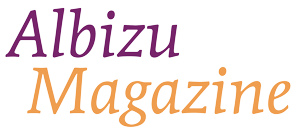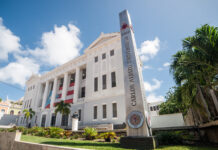C
omprehensive Treatment Models (CTMs) are all-encompassing, aiming to treat multiple Autism Spectrum Disorder (ASD) symptoms, including language, cognitive, social, and play development deficits.
What areas of development are most affected when ASD is present?

Developmental milestones are phases in an individual’s development that result in the need to meet particular basic needs or master specific skills corresponding to each stage for development to be considered typical or expected compared to most people (Papalia & Martorell, 2014). Autism Spectrum Disorder (ASD) is a neurodevelopment diagnosis whereby an individual with such a disorder shows difficulty in mastering specific skills in the early stages of development where it would typically be expected to demonstrate competence, and is usually observed before the child enters school. This implies that neurologically there are differences in brain processes that produce alterations in their personal, social, academic, or occupational functioning in various contexts [American Psychiatric Association (APA), 2022].
An individual with ASD commonly shows disturbance in communication, socialization, and patterns that manifest in restricted ways, repetitive, or both. Concerning communication, a distinction should be emphasized between the ability to acquire a large vocabulary in language versus the use of a learned language to communicate. This suggests that there are multiple ways in which an individual can communicate to socialize without necessarily using spoken language. Deficits in the social area may be in the absence or excess in social-emotional reciprocity (e.g., affection, exchange of interests, initiating or responding to social approach), in verbal and nonverbal communication used to interact socially (e.g., gestures, eye contact, body language), and in relationships (the development, maintenance, and ability to understand the nature of relationships).
Similarly, ASD constitutes a deficit in the manifestation of restricted and repetitive patterns that may exhibit in behavior, interests, or activities of daily living. Patterns are recurrent events, and when they are restricted, they are limiting; that is, they deprive the person of adapting socially to his environment in a practical way. Repetitive patterns refer to recurrent events that repeatedly occur excessively. However, it should be noted that repetitive or restricted patterns include the manifestation of the person’s interests, as well as participation in activities in a repetitive or restricted manner, and are not limited only to specific behaviors (APA, 2022).
How can early detection be achieved, and why does this play an essential role in managing this disorder?
Identification of ASD should be made by a professional team, whether clinical or school-based, and they should have the appropriate training and background regarding the diagnosis and treatment of neurodevelopmental disorders. In turn, they should use multiple sources of information including, but not limited to, an interdisciplinary assessment of social behavior, language and communication, adaptive behavior, motor skills, sensory issues, and cognitive functioning to help plan intervention and determine eligibility for special education services (Wilkinson, 2011). Early detection of the disorder is essential as it allows for early intervention, demonstrating a greater likelihood of positive long-term outcomes on symptoms and later skill development. Early intervention can begin between the ages of 2 and 3 years. Its importance lies in the fact that the child’s brain in this period is still growing, which makes a higher level of plasticity in the brain, that is, more likely to be changeable or moldable than a mature brain. Because of this capacity allows treatment to be more effective, providing the child with a higher probability of developing to his or her full potential [US Department of Health and Human Services (National Institutes of Health), 2021; Zwaigenbaum et al., 2019].
How do you determine what type of intervention or treatment at multiple levels a person needs?
To determine what interventions or treatments are ideal for an individual, it is necessary to understand that the student is interconnected with school, family, and community systems. Furthermore, it is necessary to understand that to work in the school setting, we must begin working with the student from multiple levels to maximize intervention time to ensure the most effective outcomes. From this systemic platform, the design of programs continuously evaluates the performance responses of students from level 1, which includes the entire school system, to level 2 and level 3, the latter being where the specific efforts of evaluation and intervention with students are included concretely. Therefore, it is necessary to talk about models such as the Multi-Tier System of Support (MTSS) as the Response to Intervention (RTI) that is used for the development of academic aspects [National Association of School Psychologists (NASP), 2006] and the Positive Behavioral Intervention and Supports (PBIS) that focuses more on the development of socio-emotional aspects. Then, consideration is given to the interventions needed based on the systems that influence students’ academic performance and social-emotional development.
To consider a Tier 3 intervention, which is individualized intervention, it would have to be based on the school’s needs through these systemic assessments. Once the school-wide screenings are done, it is determined which students might be at risk (Tier 2) and which would fall into clinically significant ranges (Tier 3). It should be noted that when we refer to multi-tiered interventions, one of the benefits of these interventions is that they do not focus their efforts on diagnosis as such, since it is not the priority, but instead becomes the last link, which is a difference compared to traditional assessment and diagnostic models. The PBIS system emphasizes efforts to provide the opportunity for the student to develop to term, with the use of supports, and to close the gap of the present need, compared to the skills that the student should be performing according to his or her chronological age. This provides a preventative basis that avoids establishing a diagnosis prematurely. This is beneficial as many students require fewer intensive levels of intervention. They manage to close the gap by moving into a regular stream or Tier 1 without needing to go through a traditional diagnostic evaluation process nor receive individual therapy, as not all students would necessarily qualify for this type of treatment (Bradshaw et al., 2008; Brucker, 2015; National Association of School Psychologists, 2015).
How is comprehensive ABA therapy different from focused therapy?
Applied Behavior Analysis (ABA) is an evidence-based, individualized intervention that focuses on socially significant behavior change through systematic observation and measurement, just like other targeted therapy treatments (“BACB – About Behavior Analysis”, 2023). On the other hand, MTSS is an intervention framework that focuses on identifying and supporting students who exhibit academic or behavioral difficulties through multiple levels of support. ABA is integrated with MTSS (Multilevel System of Support for Response to Intervention) in the school setting. Integrating ABA with MTSS in the school setting can be beneficial in addressing problem behavior and improving student academic achievement. We can find some ways ABA can be integrated into an MTSS system:
- Assessment and intervention selection: ABA can be used to assess and measure students’ problem behavior. With this information, specific interventions can be selected and implemented to address problem behavior. The intervention can also be selected according to its level of intensity on the MTSS.
- Goal planning: Behavioral and performance goals can be planned by the MTSS team with input from an ABA specialist. Goals and objectives are developed with the student’s current behavior and benchmarks to be achieved in mind.
- Implementation of interventions: Once appropriate interventions have been selected, they can be implemented within the different levels of MTSS. The most intensive interventions would be for the individual and group support levels, while the least intensive would be for classroom instruction.
- Monitoring and evaluation of outcomes: Monitoring and evaluation are essential components of ABA and can be used to measure student progress and the effectiveness of interventions. Information obtained from monitoring and evaluation is used to adjust interventions as needed.
In summary, integrating ABA with MTSS can effectively address problem behavior and improve students’ academic performance. Furthermore, by working together, ABA specialists and MTSS teams can provide a comprehensive and systematic approach to supporting students (Pinkelman et al., 2019).
Is ABA therapy still the most recommended therapy, and why?
ABA is one of the most used models for students with autism in a PBIS level 3 intervention. Autism is a developmental disorder affecting an individual’s social interaction and communication ability. Children and youth with autism may have difficulty learning and using appropriate social skills and behaviors. As a result, they often require specific and highly structured interventions to improve their skills and reduce problem behaviors. ABA is an intervention model based on learning principles and focuses on modifying socially meaningful behavior through systematic observation and measurement. The ABA approach is based on the idea that problem behaviors are learned and can be replaced with more adaptive and appropriate behaviors. In a PBIS system, ABA can be used at Tier 3, the most intense behavioral intervention level. This level focuses on students with significant and persistent problem behaviors requiring highly structured, individualized interventions. Some reasons why ABA is one of the most commonly used models for students with autism in a PBIS Tier 3 intervention are as follows:
- Individualization of intervention: ABA focuses on assessing and understanding each student’s specific needs and behaviors. This allows for a highly individualized intervention to be designed and tailored to the needs of each student with autism.
- Focus on teaching skills: ABA focuses on teaching specific social and behavioral skills that are specific and adaptable to each student’s needs. This includes skills necessary for social interaction and academic learning, which help improve the performance of students with autism in these areas.
- Objective Measurement of Progress: ABA uses objective behavioral measurement techniques, allowing each student’s progress to be monitored. This helps quickly identify areas requiring more attention and adjust interventions as needed.
In summary, ABA is one of the most widely used models for students with autism in a PBIS Tier 3 intervention because of its highly individualized approach, focus on teaching skills, and ability to objectively measure progress. These elements are essential to providing effective interventions tailored to the needs of students with autism (Brucker, 2015).
References:
American Psychiatric Association & American Psychiatric Association. (2022). Diagnostic and Statistical Manual of Mental Disorders. Van Haren Publishing.
BACB – ABOUT BEHAVIOR ANALYSIS. (2023, February 16). Behavior Analyst Certification Board. https://www.bacb.com/about-behavior-analysis/
Bradshaw, C. P., Koth, C. W., Bevans, K. B., Ialongo, N., & Leaf, P. J. (2008). The impact of school-wide positive behavioral interventions and supports (PBIS) on the organizational health of elementary schools. School Psychology Quarterly, 23(4), 462-473. https://doi.org/10.1037/a0012883
Brucker, J. (2015). Use of PBIS Methods to Reinforce Sportsmanship in a Recreational Setting for Children and Adolescents with Autism Spectrum Disorders [Master’s Thesis]. State University of New York at Plattsburgh.
National Association of School Psychologists. (2015). School Climate: #ConnectTheDots Brief: Connect the dots. www.Nasponline.org. Retrieved February 19, 2023, from, https://apps.nasponline.org/search-results.aspx?q=School+Climate%3A+%23ConnectTheDots+Brief
National Association of School Psychologists [NASP]. (2006). The Role of the School Psychologist in the RTI Process. Https://Www.Nasponline.Org. Retrieved February 19, 2023, from https://www.nasponline.org/Documents/Research%20and%20Policy/Advocacy%20Resources/Psychological%20Services/MASP_RTI.pdf
Papalia, D. E., & Martorell, G. (2014). Experience Human Development, 13th Edition (13th ed.). McGraw-Hill.
Pinkelman, S. E., Bundock, K., & Rolf, K. R. (2019). Supporting Students with Autism Spectrum Disorder in Schools Through Multi-Tiered Systems of Support. Springer International Publishing eBooks, 137-152. https://doi.org/10.1007/978-3-030-46295-6_10
US Department of Health and Human Services [National Institutes of Health]. (2021, April). Early Intervention for Autism. Eunice Kennedy Shriver National Institute of Child Health and Human Development. Retrieved February 19, 2023, from https://www.nichd.nih.gov/health/topics/autism/conditioninfo/treatments/early-intervention
Wilkinson, W. L. (2011, September 16). Can School Psychologists Diagnose Autism? NASP COMMUNITIES. Retrieved February 19, 2023, from http://communities.nasponline.org/browse/blogs/blogviewer?BlogKey=1680188d-e8fa-44c8-b4b9-c1dfdf549ee2
Zwaigenbaum, L., Brian, J. A., & Ip, A. (2019). Early detection for autism spectrum disorder in young children. Paediatrics & Child Health, 24(7), 424-432. https://doi.org/10.1093/pch/pxz119





























